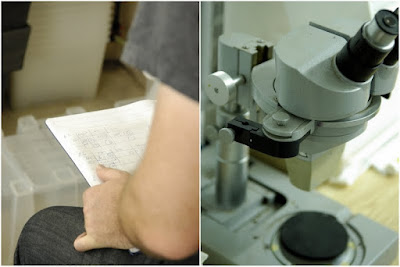does a bigger phallus actually mean the male is better?
I won't give away the ending just yet, (or maybe I will ... ) - in mosquitofish, anyway - the answer seems to be yes.
Bigger is Better in all environments: temperature-induced variation in phallus size is a reliable indicator of male physical performance and gamete quality
Males of many organisms possess elaborated structures that are used to engage in fights with other males and/or to attract females during courtship. The size and elaboration of these secondary sexual traits can be affected by the environment via its influence on the condition of an individual male. This link between male condition and the elaboration of male sexual signals is one of the most important mechanisms maintaining the reliability of these traits as signals of male quality.
male elk use extravagant antlers to battle for females
The role temperature plays in mediating the condition of individual males and the size and elaboration of their sexually selected traits is currently unknown. Males of the eastern mosquitofish (Gambusia holbrooki) possess a modified anal-fin phallus (gonopodium) that is used as both a signal of dominance and a stabbing weapon during male-male competitive bouts {as well as to fertilise females}.
 |
| image |
{Robbie} examined the effect of temperature on the size of this putative sexual signal (phallus size) by chronically exposing males to either 20° or 30°C for four weeks. {He} also tested the influence of these thermal environments on various measures of male quality; including male territorial performance, swim speed and gamete function.
Males chronically exposed to 30°C possessed longer phalluses, greater ejaculate sizes, larger testes and faster sperm swimming speeds than those exposed to 20°C. This is the first study to show that environmental variation in phallus size can be a reliable indicator of male physical performance and gamete quality.
{And what does this mean, and why does it matter? Well, it means that mosquitofish may have higher reproductive outputs in warmer environments, and might do even better than they currently do when climates warm further. In Australia, mosquitofish are invasive and by out-competing and eating eggs and young of natives, they are aiding the decline of native fish populations.}
Not good. Who knew that global warming would increase phallus sizes ...












